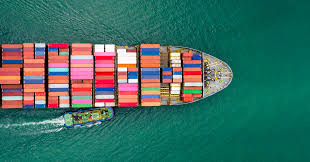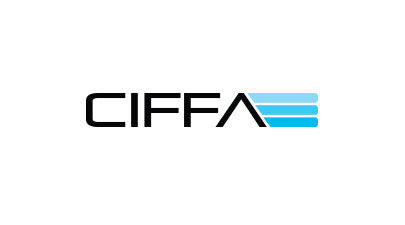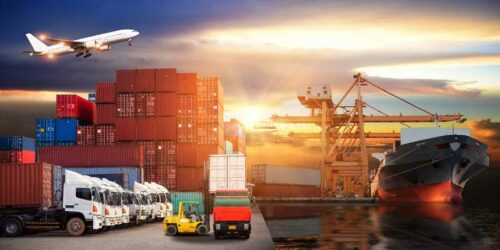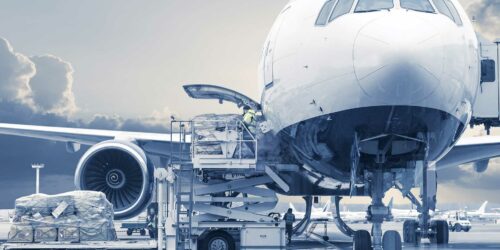CIFFA Exam Sample Practice Questions and Answers – Ocean Freight
Questions
- Name three commodities that may travel as bulk cargo.
- What is a conventional vessel?
- What does the term break-bulk cargo mean?
- A container ship can also be considered a vessel.
- Describe the function of a MAFI.
- What is a LASH vessel?
- Define a main line service route.
- Define an RTW service route.
- Define a feeder service route.
- Define a regional service route.
- Define a liner service.
- Define a tramp service.
- Describe some of the vital components required for a primary port.
- Define a “gateway port.”
- What are the three major seaports in Canada?
- Name three other ports in Canada.
- Name ten of the top volume container ports.
- What is a transport hub?
- What is multimodalism?
- Describe a “mini landbridge.”
- Define an ocean container.
- List the benefits of containerizing cargo.
- The ISO divides containers into five types. Name them.
- Name the five types of general cargo containers.
- Name the factors that must be considered when selecting an ocean container.
- Name some of the “quick rules” that should be followed when loading an ocean container.
- Define the following acronyms for ocean freight:
FCL- __________________________________________
LCL- __________________________________________
W/M- __________________________________________
B.A.F.- _________________________________________
B/L- __________________________________________
C.A.F- __________________________________________
CBM- __________________________________________
C.H.C.- __________________________________________
CST- __________________________________________
C/T- __________________________________________
CY- __________________________________________
FAK- __________________________________________
OBL- __________________________________________
POD-
POL- __________________________________________
TEU- __________________________________________ - What is a “to order” bill of lading?
- What is a through bill of lading?
- Describe the ocean waybill.
- Describe a combined transport bill of lading.
- What is a letter of guarantee?
- What is a clean bill of lading?
- Define NVOCC.
- What documents are issued by the carrier in a consolidation?
- On the map below, indicate the key gateway container seaports for North and Central America.
- On the map below, indicate the key gateway container seaports for Northern Europe, and the Mediterranean.
- On the map below, indicate the key gateway container seaports for East Asia (other than China), and South East Asia.
- On the map below, indicate the key gateway container seaports for China.
- Calculate the volume weight in cubic metres for the following scenarios. Refer to Appendix “B” for conversion tables:
a) Dimensions are 55.5 in L x 65.7 in W x 74.8 in H.
b) 5 crates, dimensions of each crate are 6 ft L x 7.5 ft W x 15 ft H.
c) 60 boxes, dimensions of each box are 12 cm L x 10 cm W x 15 cm H.
d) Dimensions are 90 in L x 4 ft W x 75 in H. - You have been informed by the carrier that your volume/weight ratio is 1 m3 equals 1,000 kg. What is the chargeable weight for the following:
a) 5 crates, dimensions of each crate are 6 ft L x 7.5 ft W x 15 ft H, each crate weighs 750 kg.
b) 60 boxes, dimensions of each box are 12 cm L x 10 cm W x 15 cm H, each box weighs 50 kg.
c) Dimensions are 90 in L x 4 ft W x 75 in H, the weight is 500 lb.
Answers
- Name three commodities that may travel as bulk cargo.
Oil, fertilizers, grain, chemicals, iron ore. - What is a conventional vessel?
A vessel with several hatches to store different cargoes. - What does the term break-bulk cargo mean?
Larger cargo that is loaded directly onto a conventional vessel. It is carried either on deck or in cargo holds. - A container ship can also be considered a cellular vessel.
- Describe the function of a MAFI.
A MAFI is used when cargo for a RO-RO vessel is not self-propelled. Cargo is placed on the MAFI and then rolled into the vessel. - What is a LASH vessel?
A vessel with a lighter (floatable oversized container) aboard which can be used for inland water transportation only. - Define a main line service route.
Main line service route employs large, fast container vessels, with fixed schedules, which sail between large dedicated ports of call. - Define an RTW service route.
Round the world service extends around the world in one direction continually. - Define a feeder service route.
Feeder service employs smaller vessels serving many smaller ports and delivers cargo to and from the main line service. - Define a regional service route.
Regional service employs smaller vessels than a main line service, but offers direct ports of call between main ports. Generally, a north-south direction, e.g., South America, Caribbean. - Define a liner service.
Liner service is identified by regular vessel sailings, along well-established routes and calling at regularly scheduled ports. - Define a tramp service.
Tramp service is a service with no regular or fixed sailing schedule. - Describe some of the vital components required for a primary port.
Depth of water in port, cargo-handling equipment, skilled work force, proximity to markets, intermodal interfaces/connections to truck and rail services. - Define a “gateway port.”
Gateway port is a primary port that services a major hinterland. - What are the three major seaports in Canada?
Halifax, Montreal and Vancouver. - Name three other ports in Canada.
Halifax, Quebec City, Saint John, Toronto, Hamilton, Churchill, Prince Rupert. - Name ten of the top volume container ports.
Singapore, Shanghai, Hong Kong, Shenzhen, Busan, Dubai, Guangzhou, Ningbo-Zhousan, Rotterdam, Quingdao. - What is a transport hub?
Also called transport interchange, it is a place where cargo is exchanged between transport modes. - What is multimodalism?
Multimodalism is the transportation of goods in or on a transport unit carried generally without being opened, in sequence over two or more modes of transport. - Describe a “mini landbridge”.
It is the movement of containers from an ocean port to an inland destination (involving modal inland terminals), either in the same or another country, in effect bridging ocean ports to inland points. - Define an ocean container.
It is permanent in character, specially designed to facilitate the carriage of goods by one or more modes of transport, fitted with devices to permit efficient cargo handling. - List the benefits of containerizing cargo.
Faster loading/unloading, ease of handling, less time for a ship in port, seamless transfer of cargo between modes of transport, greater cargo security, reduction in labour/cargo handling expenses, savings on packaging costs. - The ISO divides containers into five types. Name them.
1) General cargo, 2) reefer, 3) tank, 4) (dry) bulk, 5) platform. - Name the five types of general cargo containers.
1) Closed, 2) open top, 3) ventilated, 4) insulated, 5) half-height. - Name the factors that must be considered when selecting an ocean container.
Type, size, weight and density of cargo, packing/unpacking facilities, fixing/securing points. - Name some of the “quick rules” that should be followed when loading an ocean container.
Container must be sound (no holes, protrusions on sides or floor, etc.); cargo must be secured to prevent any movement in any direction; heavy cargo must not be stored above lighter cargo; liquids must be stowed below dry cargo; empty voids must be prevented or otherwise secured; weight must be evenly distributed throughout the container maintaining a low centre of gravity. - Define the following acronyms for ocean freight:
FCL – Full container load
LCL – Less than a container load
W/M – Weight or measure
B.A.F – Bunker adjustment factor
B/L – Bill of lading
C.A.F – Currency adjustment factor
CBM – Cubic metre
C.H.C. – Cargo handling charges
CST – Container service tariff
C/T – Container terminal
CY – Container yard
FAK – Freight all kinds
OBL – Original bill of lading
POD – Port of discharge
POL – Port of loading
TEU – Twenty-foot equivalent unit - What is a “to order” bill of lading?
This is a negotiable form of the bill of lading. The consignee box in the bill of lading shows “to order.” This is used when a document of title is required. - What is a through bill of lading?
This bill of lading provides for the carriage of goods from the point of origin to the final destination. It may involve more than one ocean carrier and one or more modes of inland transport. - Describe the ocean waybill.
This is a document of movement only used to affect the transport of the goods. It is non-negotiable. - Describe a combined transport bill of lading.
This type of bill of lading covers a movement involving two or more modes of transport from a place of receipt to a place of delivery. - What is a letter of guarantee?
An agreement between a consignee and a bank on a shipment where an original bill of lading is not yet available, or lost and the goods have arrived at destination. The consignee contracts with the bank to protect the carrier from all losses, damage, etc., arising from the release of the cargo. - What is a clean bill of lading?
Notation on the bill of lading “received on board in apparent good order and condition.” - Define NVOCC.
NVOCC – Non-vessel Operating Common Carrier. - What documents are issued by the carrier in a consolidation?
FIATA or NVOCC bills of lading. - On the map below, indicate the key gateway container seaports for North and Central America.
- On the map below, indicate the key gateway container seaports for Northern Europe, and the Mediterranean.
- On the map below, indicate the key gateway container seaports for East Asia (other than China), and Southeast Asia.
- On the map below, indicate the key gateway container seaports for China.
- Calculate the volume weight in cubic metres for the following scenarios. Refer to Appendix “B” for conversion tables:
a) Dimensions are 55.5 in L x 65.7 in W x 74.8 in H.
4.470 m3
b) 5 crates, dimensions of each crate are 6 ft L x 7.5 ft W x 15 ft H.
95.569 m3
c) 60 boxes, dimensions of each box are 12 cm L x 10 cm W x 15 cm H.
0.108 m3
d) Dimensions are 90 in L x 4 ft W x 75 in H.
5.309 m3 - You have been informed by the carrier that your volume weight ratio is 1 m3 equals 1,000 kg. What is the chargeable weight for the following:
a) 5 crates, dimensions of each crate are 6 ft L x 7.5 ft W x 15 ft H, the weight of each crate is 750 kg.
Volume weight 95.569 m3; actual weight 3,750 kg (3,750 ÷ 1,000 = 3.750 m3). Chargeable weight is the volume weight.
b) 60 boxes, dimensions of each box are 12 cm L x 10 cm W x 15 cm H, each box weighs 50 kg.
Volume weight 0.108 m3; actual weight 3,000 kg
(3,000 ÷ 1,000 = 3 m3). Chargeable weight is the actual weight.
c) Dimensions are 90 in L x 4 ft W x 75 in H, weight is 500 lb.
Volume weight 5.309 m3; actual 226.80 kg
(226.80 ÷ 1,000 = 0.227 m3).
Chargeable weight is the volume weight.







I sincerely appreciate this publication there are helpful.
Thanks